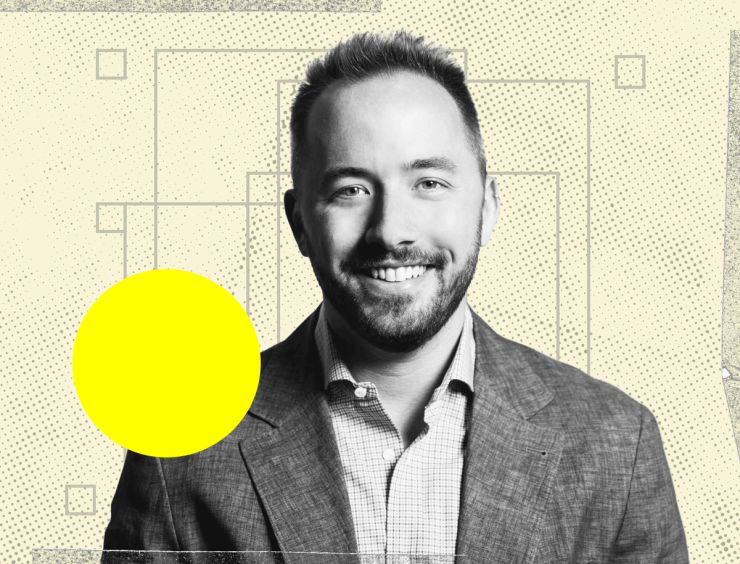The Signal Insight
It has been 18 years since Drew Houston co-founded Dropbox, the cloud storage company, after misplacing a USB thumb drive containing important files. But the MIT-trained Meta board member still spends hundreds of hours a year doing his own coding.
“The way I really understand any technology is really by getting under the hood,” he explains, saying it’s an advantage for a CEO to “live a couple of years in the future.”
User growth at Dropbox has stalled as it faces tougher competition from the likes of Google and Microsoft, but Houston maintains that its market opportunity is still vastly larger than its 18 million paying users, who drove $2.5 billion in revenue last year.
This week, he introduced new AI-driven tools to differentiate Dropbox from rivals by understanding users’ “context” across a multitude of workplace apps. Houston pitches the expansion of its Dropbox Dash “universal search” tool as helping people in workplaces to scour, summarize, and interrogate a wide range of files in ways that consumer-focused AI models cannot.
Staying ahead of “the biggest change to computing in my lifetime” has been vital in his role as CEO, Houston says; he has fed board letters, company information, and records of his past conversations into AI agents that act as his “thought partners.” Here’s how he explained his desire to be on “the bleeding edge,” in an interview conducted with his AI agent listening in.
This interview has been condensed and edited for clarity.
Andrew Edgecliffe-Johnson: What marks out this moment for Dropbox?
Drew Houston: I started Dropbox because I kept forgetting my thumb drive. But the real problem was never really about the thumb drive itself, it was about how hard it is to find and access the information we need. If you fast-forward to today, that problem’s gotten exponentially worse. In the beginning, it was files scattered across devices. Now it’s 100 tabs sprayed across the top of my screen. And then there’s this ironic situation with AI, [which] on the one hand has all these superpowers, and yet it can’t tell me the first thing about my work. That’s really the problem that Dash solves. If we were to start building Dropbox over from scratch, this is what we’d build. You always have to ask yourself, “If we were to disrupt ourselves, what would we do?”
You’re up against the likes of Google Drive and Microsoft OneDrive, which have integrated their own AI features and have vast user bases. Can you compete?
That’s the only world we’ve ever known, so all $2.5 billion of our revenue has come against the backdrop of competing with Microsoft and Google and everyone else. This will be a process, but we see a huge opportunity. We see the market for organizing all your cloud content and providing that missing context layer with Dash is way bigger than the market for syncing your files.
I’m intrigued that you still do a lot of coding yourself. I’m guessing you’re a busy man. Why are you spending your time doing this?
I grew up as that little kid mashing buttons on a screen. I was lucky that my parents had an IBM PC in the living room when I was about three. AI is the biggest change to computing in my lifetime, and the way I understand any technology is by getting under the hood. It gives me a much better sense of what’s ready for prime time and what’s not quite there yet. I think it’s a big advantage if you can live a couple of years in the future and stub your toes on all the obvious problems, and bring back the solutions.
How have you seen your job as co-founder change now that Dropbox isn’t a startup anymore?
It’s been a progression from designing systems of code and algorithms to designing systems of people and culture. [As a founder-CEO], your job keeps evolving and changing. There’s no one who taps you on the shoulder and tells you exactly what that looks like, so you have to figure that out. [You have to] understand what game you’re playing, and what game you’re going to be playing in a couple of years, to keep your personal growth curve ahead of the company’s growth curve.
What have you found has helped you do that?
For me, reading has been the single most helpful thing in scaling the company. Because a lot of these challenges might be new to you as a young founder, but they’re not new to the world of business or technology. So in the beginning, I would go on Amazon and I would type in “sales” or “marketing” or “finance” or “strategy” or whatever, and I would buy all these books and go up on the roof of the house I was living in and just read. Reading about design doesn’t make you a great designer, but it starts to build this mental scaffolding.
Then, if you want to know what’s going to happen with AI in the future, it helps to understand the past. History doesn’t repeat; it rhymes. But you can learn a lot from the other big eras of computing, and its boom periods, to inform what the future might look like.
So are you reading back on the dot-com era at the moment?
Yes, the dot-com era, semiconductors, the transistor, the Industrial Revolution. And a couple of things jump out. AI is not the first time humans have automated things. Photoshop did not really end photography. Electronic music was not the end of music. Excel did not end financial analysis. There was a panic that accompanied [those innovations, but they] created more demand for the actual craft. It is true that these tools made it easy to get a lot of B+ or B- work for free, but the great photographers, great musicians, and great financial minds doing the A+ work benefited a lot from using these tools.
What keeps you doing this after almost 20 years?
I never get tired of looking over someone’s shoulder, in a Starbucks, on their laptop, and seeing a little Dropbox icon. And then, with every new area of computing, all these new opportunities open up. But there’s always this big gap between what’s possible on the frontier and what normal people experience. Today, our experience at work using our computers is pretty similar to pre-gen-AI, but there’s always more you can do. And there’s always more pain you can take out of technology.
Notable
- An activist investor tried this year to end the dual-class share structure which gives Houston voting control of Dropbox. In his interview with Semafor, Houston defended the structure, saying, “It allows me to focus on the long term and make big investments” in products that may not pay off immediately.


